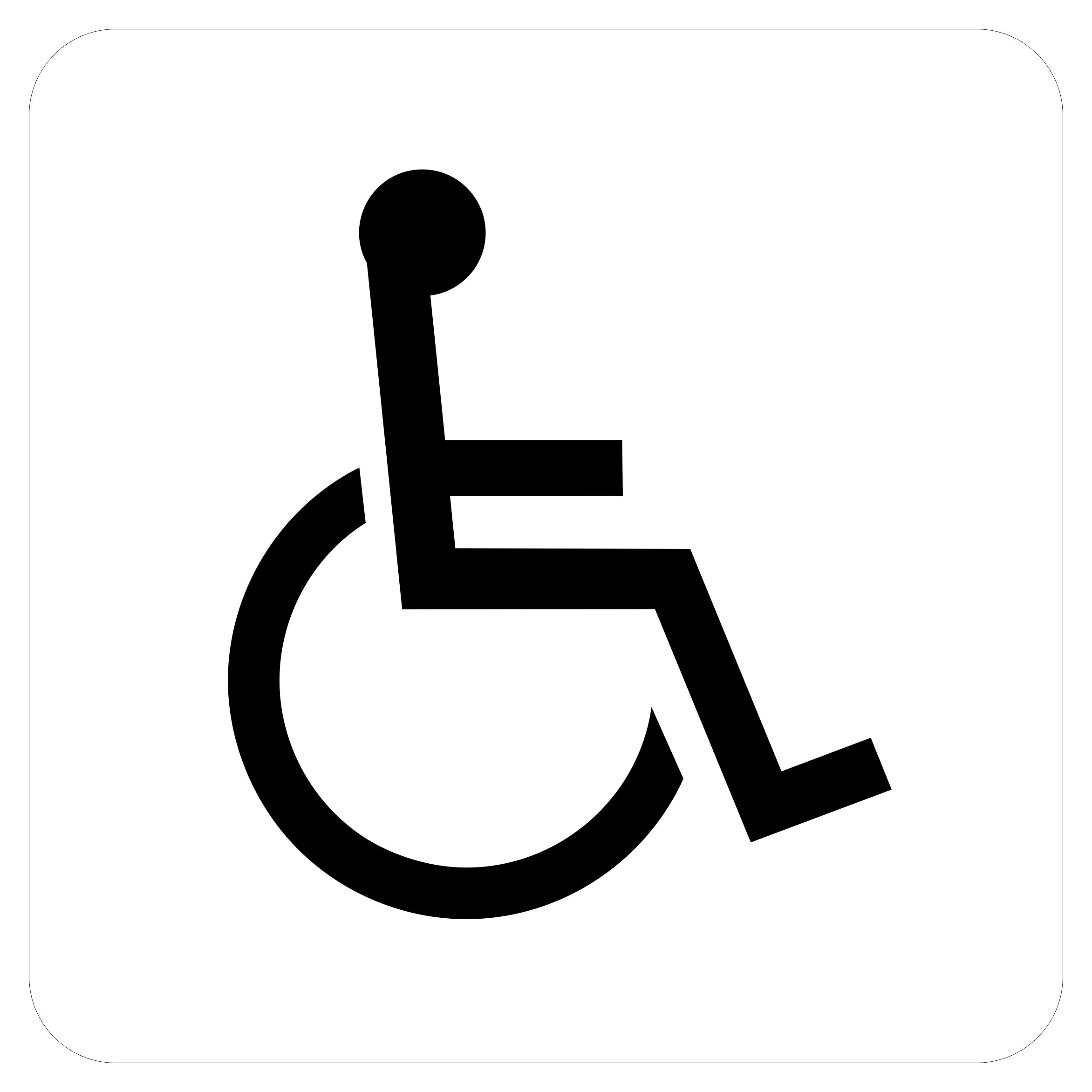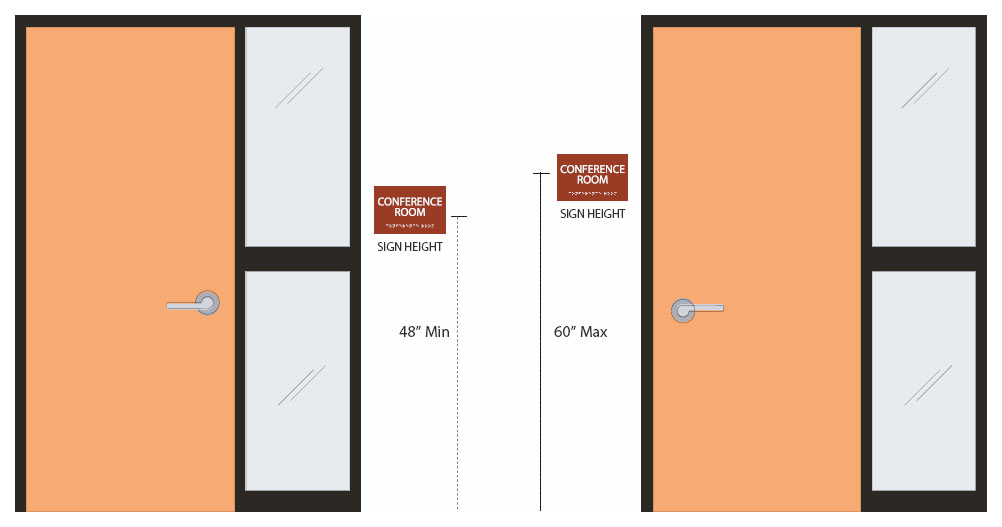ADA Signs: Vital Devices for Inclusive Environments
ADA Signs: Vital Devices for Inclusive Environments
Blog Article
Exploring the Secret Functions of ADA Indicators for Boosted Availability
In the realm of ease of access, ADA indicators serve as quiet yet powerful allies, making sure that areas are accessible and inclusive for people with specials needs. By integrating Braille and tactile elements, these indications break barriers for the visually impaired, while high-contrast shade plans and readable typefaces cater to diverse aesthetic demands.
Importance of ADA Compliance
Ensuring conformity with the Americans with Disabilities Act (ADA) is vital for promoting inclusivity and equal gain access to in public rooms and work environments. The ADA, passed in 1990, mandates that all public centers, companies, and transport services suit people with disabilities, ensuring they enjoy the same civil liberties and opportunities as others. Compliance with ADA requirements not just meets lawful obligations however additionally enhances an organization's reputation by demonstrating its dedication to diversity and inclusivity.
One of the vital facets of ADA conformity is the application of accessible signage. ADA signs are developed to ensure that individuals with handicaps can quickly browse through areas and structures.
In addition, sticking to ADA guidelines can mitigate the risk of prospective penalties and legal effects. Organizations that stop working to abide by ADA standards may face suits or penalties, which can be both monetarily challenging and harmful to their public image. Thus, ADA compliance is indispensable to promoting a fair atmosphere for every person.
Braille and Tactile Aspects
The consolidation of Braille and responsive components into ADA signs embodies the principles of accessibility and inclusivity. These functions are essential for people who are visually damaged or blind, allowing them to navigate public rooms with greater freedom and confidence. Braille, a tactile writing system, is essential in supplying written info in a layout that can be easily regarded through touch. It is typically put under the corresponding message on signage to make certain that individuals can access the details without visual aid.
Responsive elements prolong past Braille and include elevated icons and characters. These elements are developed to be noticeable by touch, permitting people to determine room numbers, washrooms, exits, and other crucial locations. The ADA establishes certain guidelines relating to the size, spacing, and positioning of these responsive components to enhance readability and make sure consistency across various atmospheres.
High-Contrast Color Pattern
High-contrast color design play a pivotal role in boosting the visibility and readability of ADA signs for individuals with aesthetic disabilities. These systems are essential as they maximize the distinction in light reflectance in between text and history, making certain that indications are conveniently noticeable, even from a distance. The Americans with Disabilities Act (ADA) mandates using details color contrasts to suit those with restricted vision, making it an important element of compliance.
The efficiency of high-contrast colors depends on their ability to attract attention in numerous lighting conditions, consisting of dimly lit atmospheres and locations with glare. Commonly, dark text on a light history or light message on a dark background is used to achieve optimum contrast. Black text on a yellow or white history offers a raw visual difference that assists in fast acknowledgment and comprehension.

Legible Fonts and Text Size
When thinking about the style of ADA signage, the choice of legible fonts and appropriate message dimension can not be overstated. The Americans with Disabilities Act (ADA) mandates that font styles should be sans-serif and not italic, oblique, manuscript, extremely ornamental, or of unusual type.
The dimension of the text likewise plays a crucial role in access. According to ADA guidelines, the minimum text elevation ought to be 5/8 inch, and it ought to boost proportionally with viewing distance. This is especially essential in public spaces where signage needs to be checked out rapidly and accurately. Uniformity in text dimension adds to a cohesive aesthetic experience, assisting individuals in browsing atmospheres effectively.
Moreover, spacing between letters and lines is indispensable to legibility. Sufficient spacing stops personalities from appearing crowded, enhancing readability. By adhering to these standards, designers can significantly enhance ease of access, making sure that signage offers its intended objective for all people, despite their aesthetic capabilities.
Effective Positioning Approaches
Strategic placement of ADA signage is necessary for link making best use of availability and guaranteeing compliance with lawful criteria. ADA standards specify that indicators need to be placed at a height between 48 to 60 inches from the ground to ensure they are within the line of sight for both standing and seated people.
Additionally, indicators must be positioned surrounding to the lock side of doors to enable very easy recognition before access. Consistency in indication placement throughout a center enhances predictability, lowering complication and boosting general individual experience.

Conclusion
ADA signs play a crucial role in promoting access by incorporating features that deal with the demands of individuals with handicaps. These aspects collectively foster a comprehensive atmosphere, highlighting the value of ADA compliance in making sure equal accessibility for all.
In the world of access, ADA signs serve as silent yet effective allies, guaranteeing that rooms are inclusive and accessible for people with specials needs. The ADA, established in 1990, mandates that all public centers, employers, and transport solutions accommodate people with handicaps, ensuring they appreciate the very same legal rights and opportunities as others. ADA Signs. ADA signs are made to guarantee that people with specials needs can easily navigate via rooms and buildings. ADA guidelines specify that signs need to be placed at an elevation between 48 to 60 inches from the ground to ensure they are within the line of view for both standing and seated people.ADA signs play a vital duty in promoting accessibility by integrating features that address the demands of individuals with disabilities
Report this page